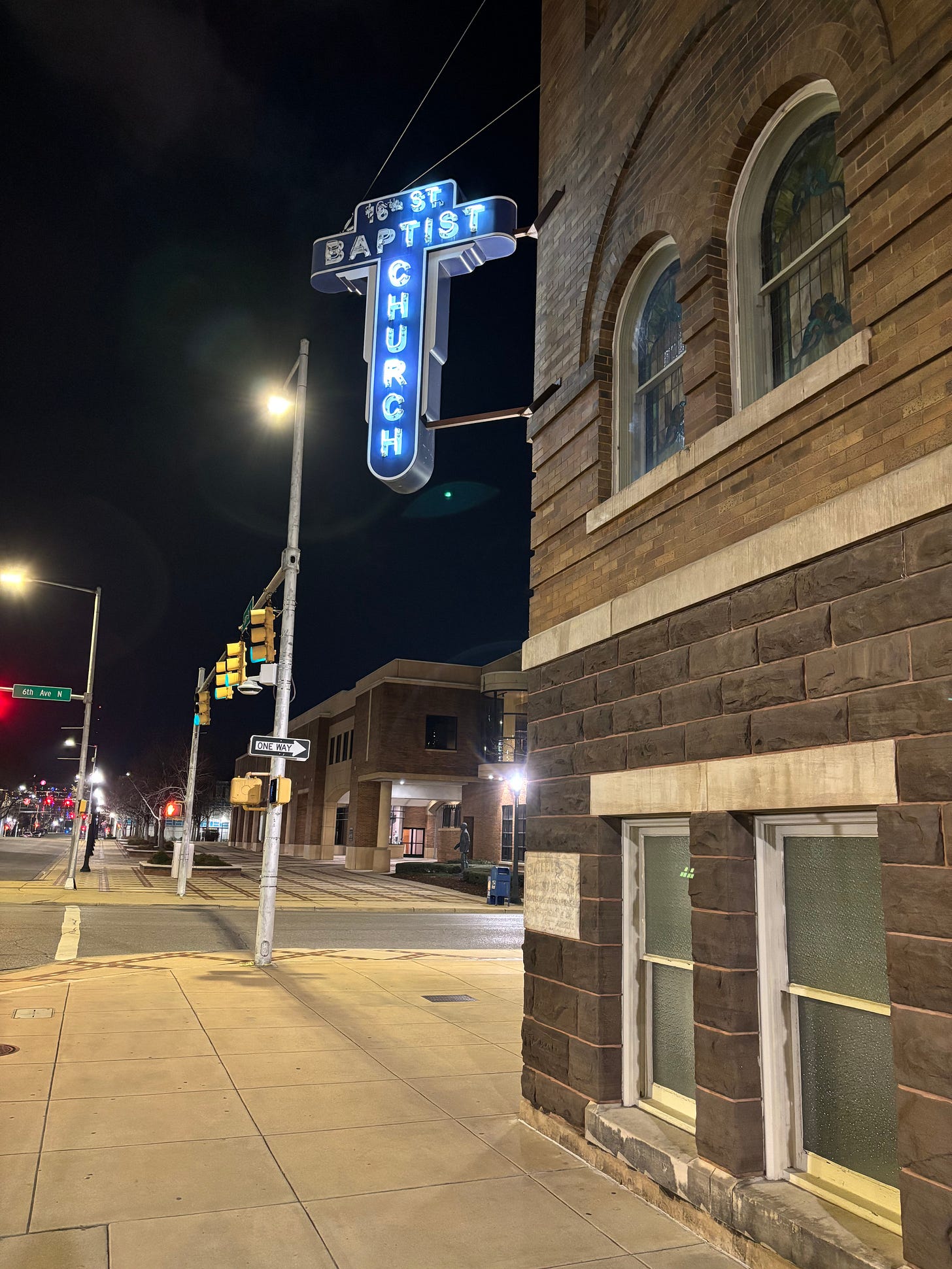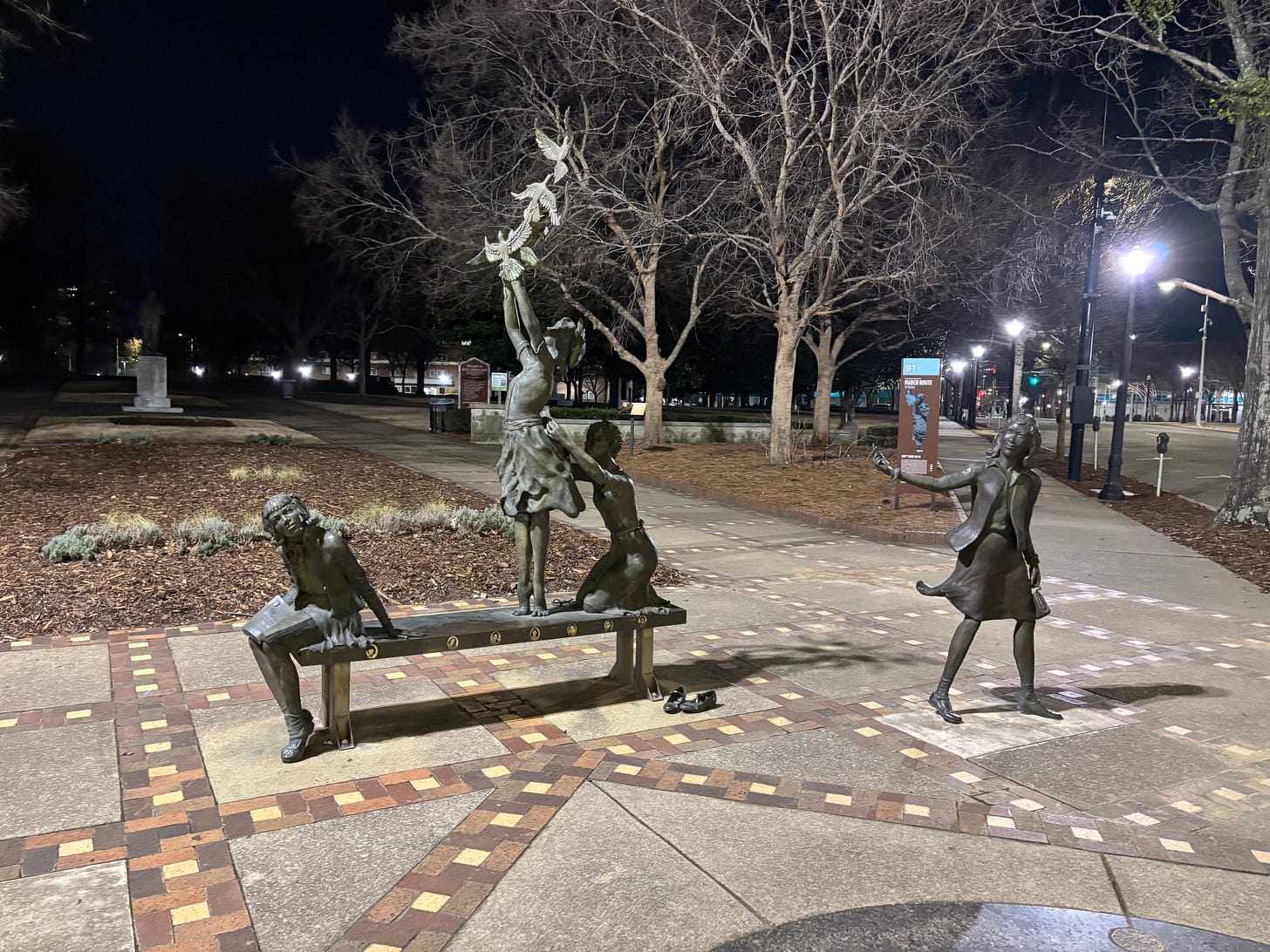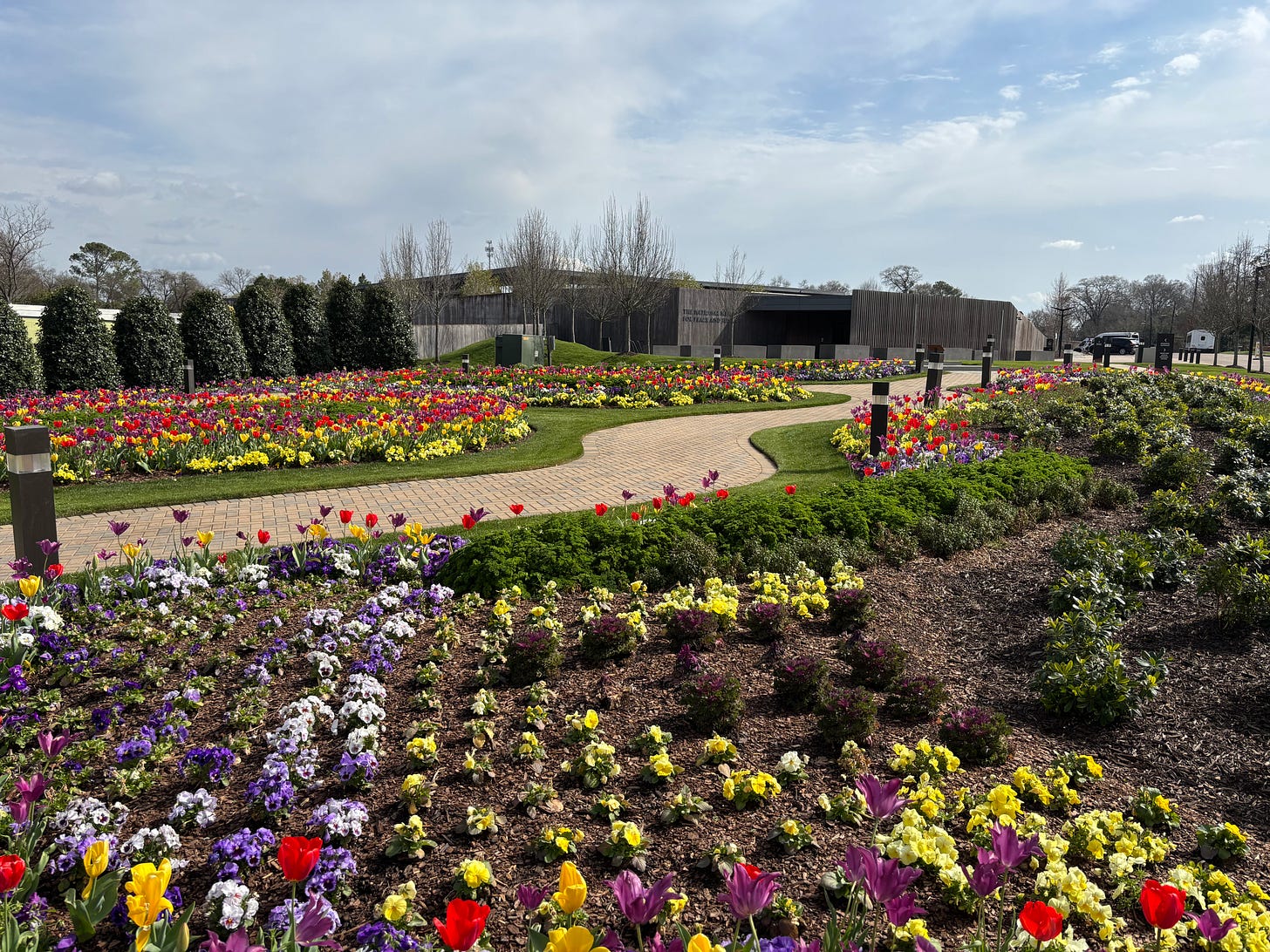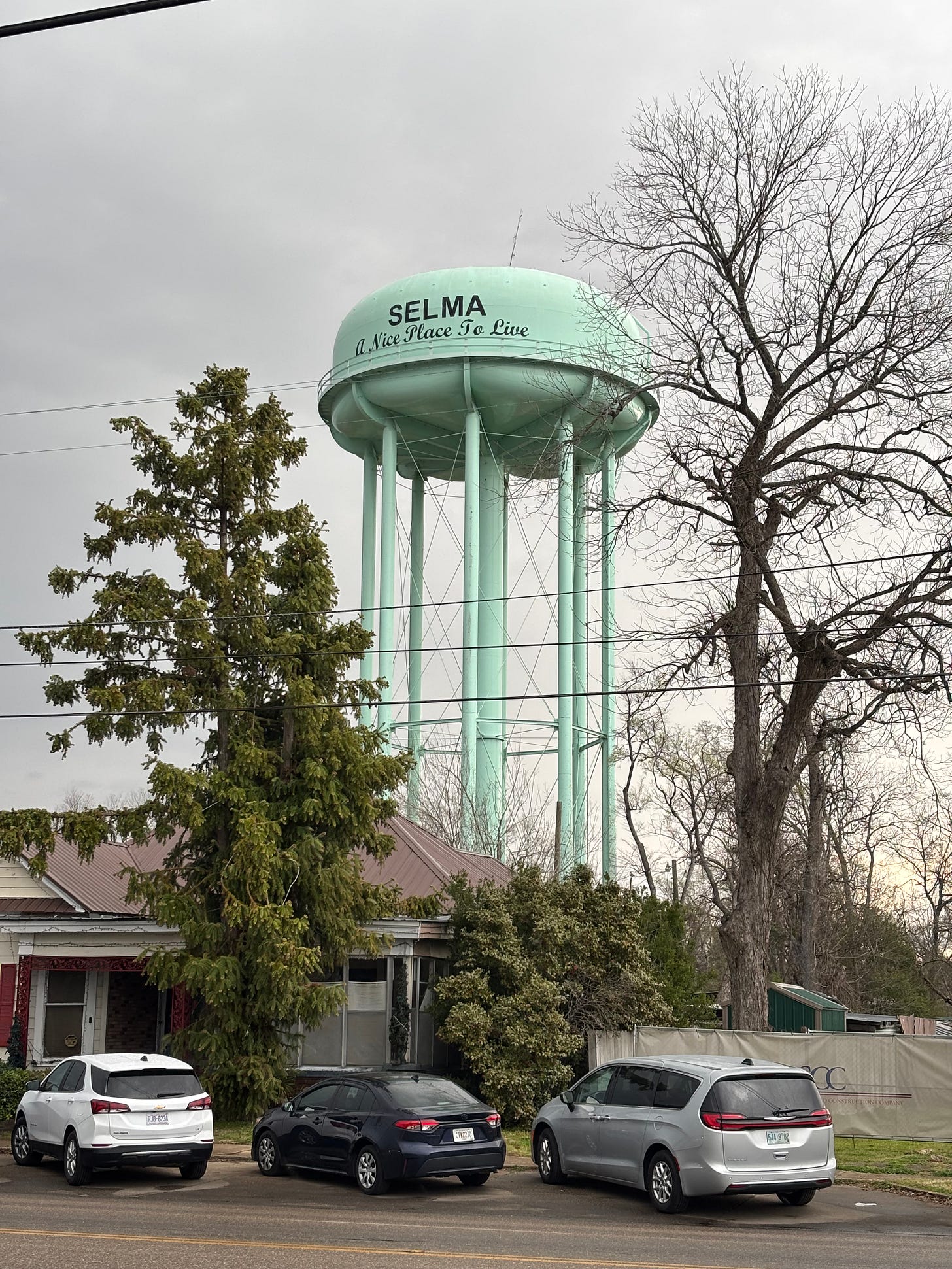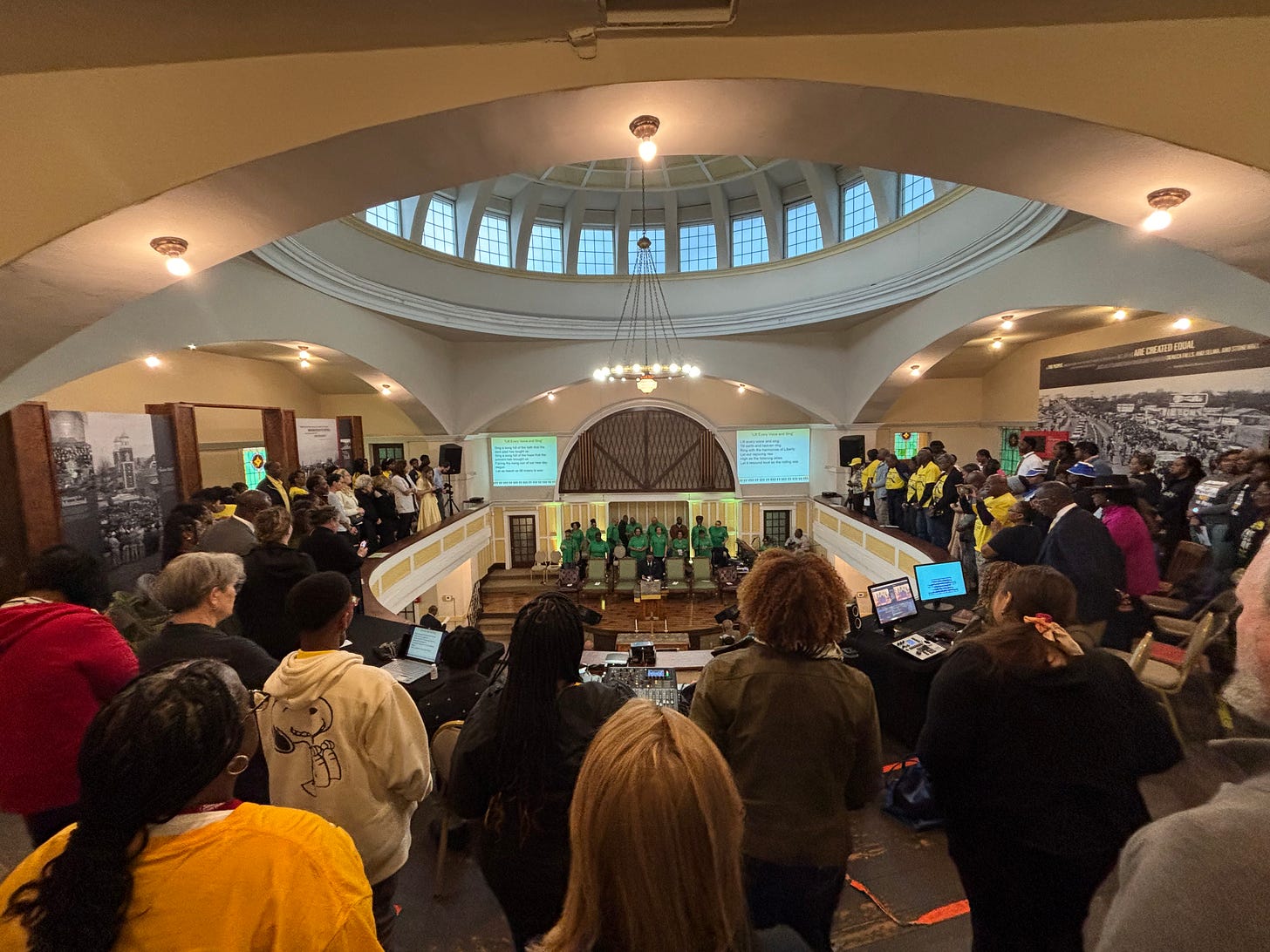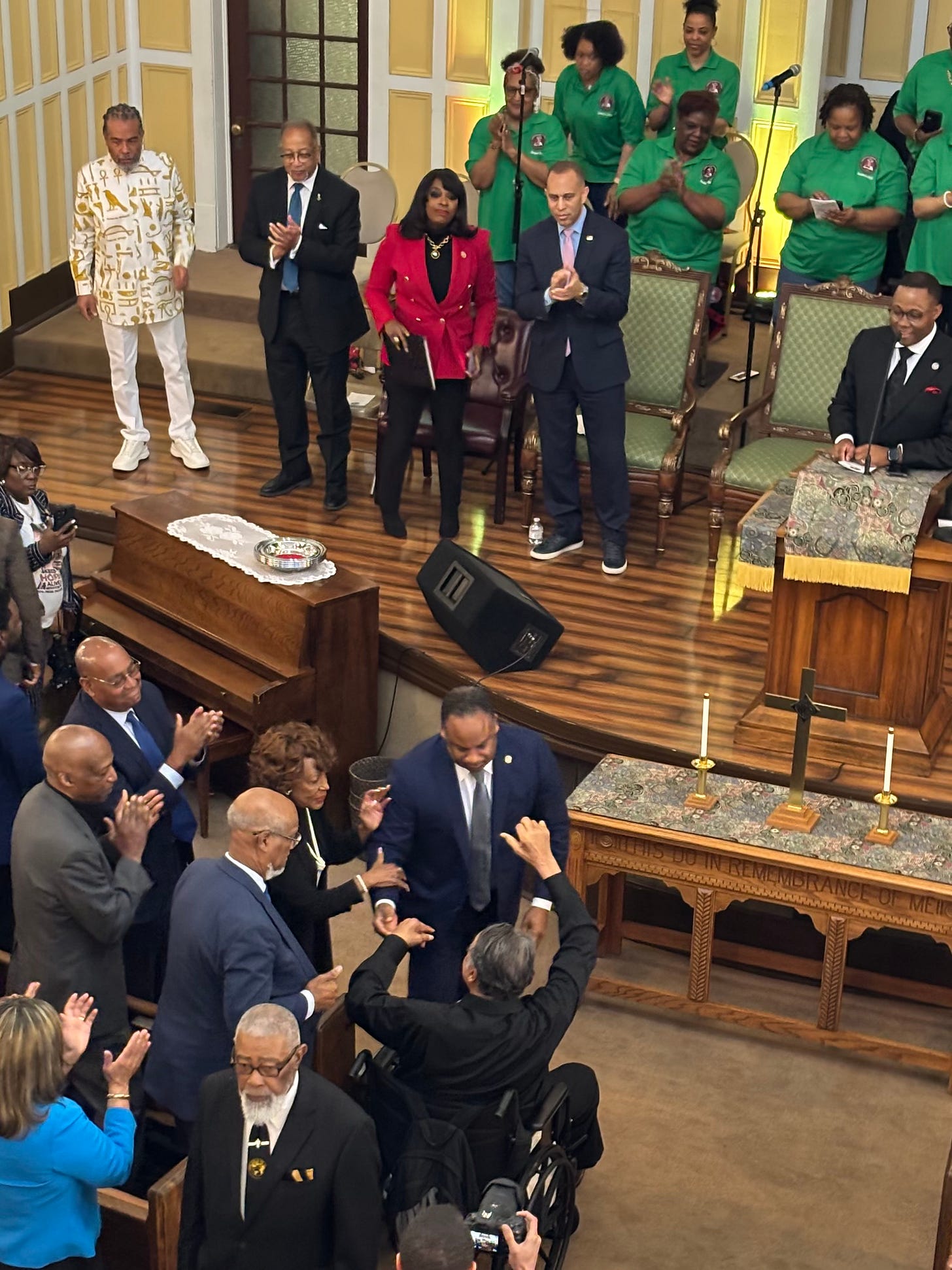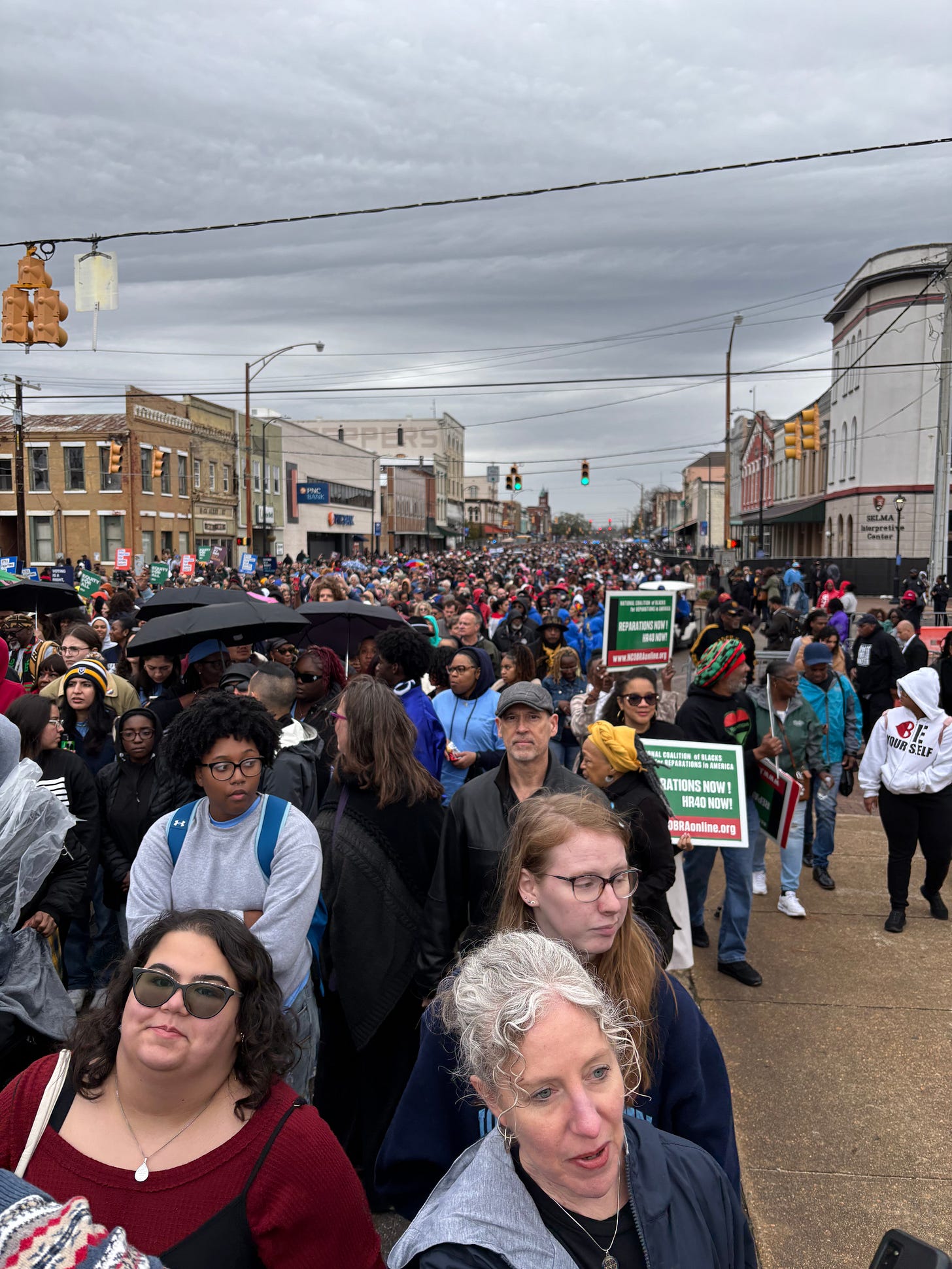Bloody Sunday—March 7, 1965—was a watershed moment in the American civil rights movement, with movement leaders marching from Brown AME Church in Selma, Alabama across the Edmund Pettus Bridge toward Montgomery, the state capital. Upon crossing they were met by hundreds of Alabama state troopers, who beat and gassed the marchers, much to the shock and disgust who watched the events on national news broadcasts that evening.

Last Friday I hit the road with 19 students and four colleagues for Alabama, to commemorate the 60th anniversary of Bloody Sunday. We drove in three 12-passenger vans and stayed in three rented homes. We covered a lot of miles and spent a lot of hours together. Here’s a taste of our itinerary.
Day 1: Memphis and Birmingham
We left JBU a little after 6:00 am on Friday in order to get to the National Civil Rights Museum in time for our noon tickets. The museum is located on the site of the Lorraine Motel in Memphis, Tennessee, where Martin Luther King, Jr was assassinated in 1968.
After spending several hours in Memphis (including lunch at Central BBQ) we hit the road once more, this time to Birmingham, Alabama. We got in pretty late, but were able to see 16th Street Baptist Church, the site of a 1963 Ku Klux Klan bombing that killed four girls: Addie Mae Collins, Cynthia Wesley, Carole Robertson, and Carol Denise McNair. Across the street from the church is a memorial to the girls.
After another hour-and-a-half on the road, we reached Montgomery, our final destination for the evening.
Day 2: Montgomery
On Saturday morning we headed out to the Legacy Sites, a series of museums and memorials sponsored by attorney and activist Bryan Stevenson’s Equal Justice Initiative. The first site we visited was the Legacy Museum, which tells the African-American story from the evils of slavery to the challenges of mass incarceration.
Next, we visited the National Memorial for Peace and Justice, which honors the many Americans who were victims of lynching before, during, and even after the Jim Crow era.
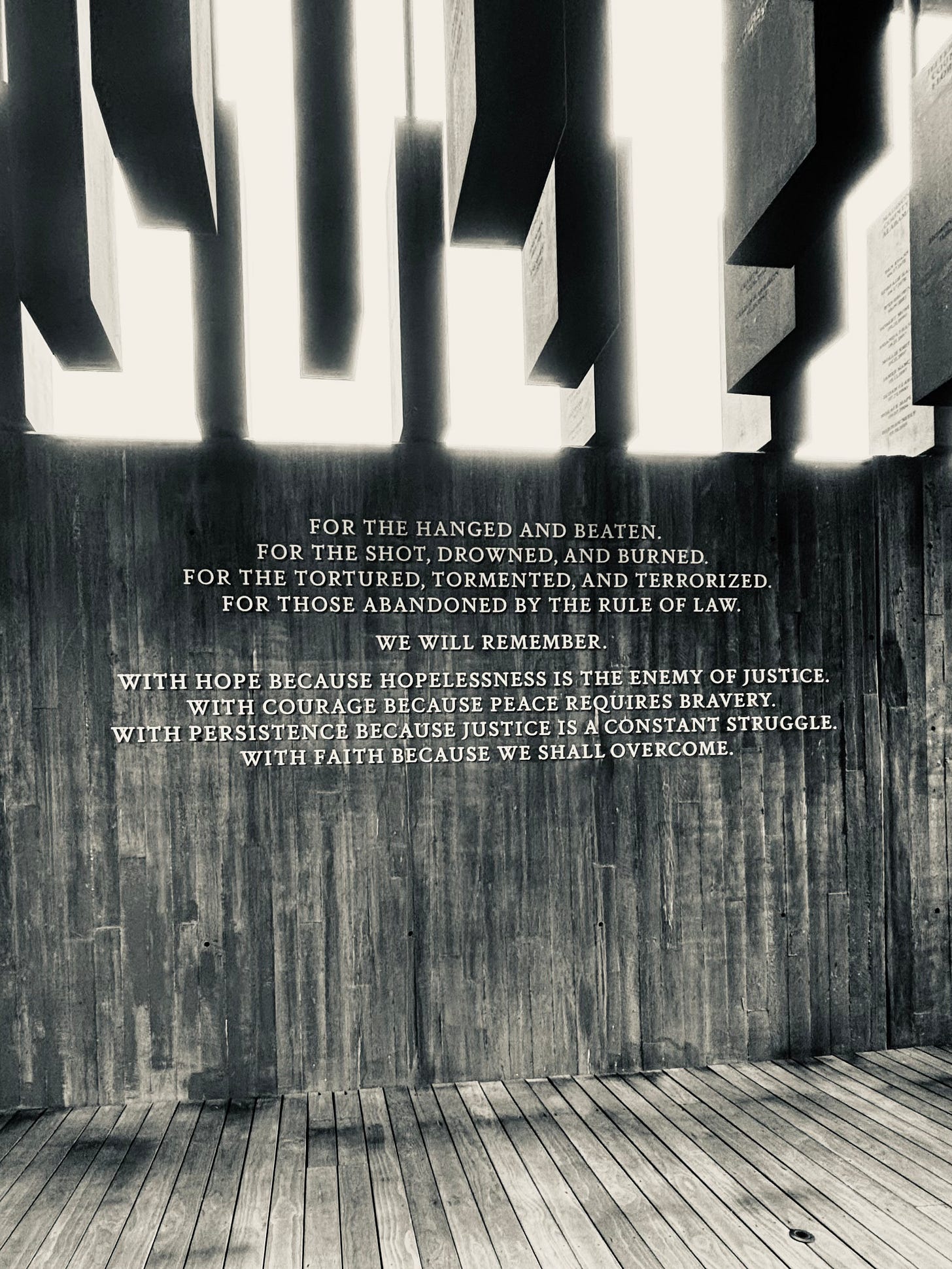
After communal grocery shopping we had a spaghetti dinner together, sharing our initial reactions to the day’s events before departing for our respectives houses.
Day 3: Selma
We left for Selma early Sunday morning, uncertain of what the traffic and weather would hold. Traffic was surprisingly light despite limited roads into town, though rain seemed to threaten most of our hour commute.
We found parking a few blocks from Brown AME Church, which launched the original march six decades earlier. We were under the impression that folks would be gathering there, but we were mistaken; the area was virtually deserted. After doing some on-the-fly reconnaissance, we determined that there would be gatherings throughout the city at various churches, so we walked to the one closest to us: Tabernacle Baptist Church.
The church was crowded, but our group found space in a few different places in the building (some were asked to head down to the basement, to make space for others). The choir had already begun to sing when we arrived, and we settled in just in time for announcements. We were surprised to learn the church was expecting several dignitaries, including a “congressional delegation.”
Much to our surprise, many notable figures arrived shortly thereafter, including civil rights icons Jesse Jackson and Al Sharpton plus several U.S. representatives, including Hakeem Jeffries, the House Minority Leader and (likely) future Speaker of the House. Preaching the sermon was Sen. Raphael Warnock of Georgia, who has served as the minister at Atlanta’s Ebenezer Baptist Church, where MLK Jr. regularly preached.
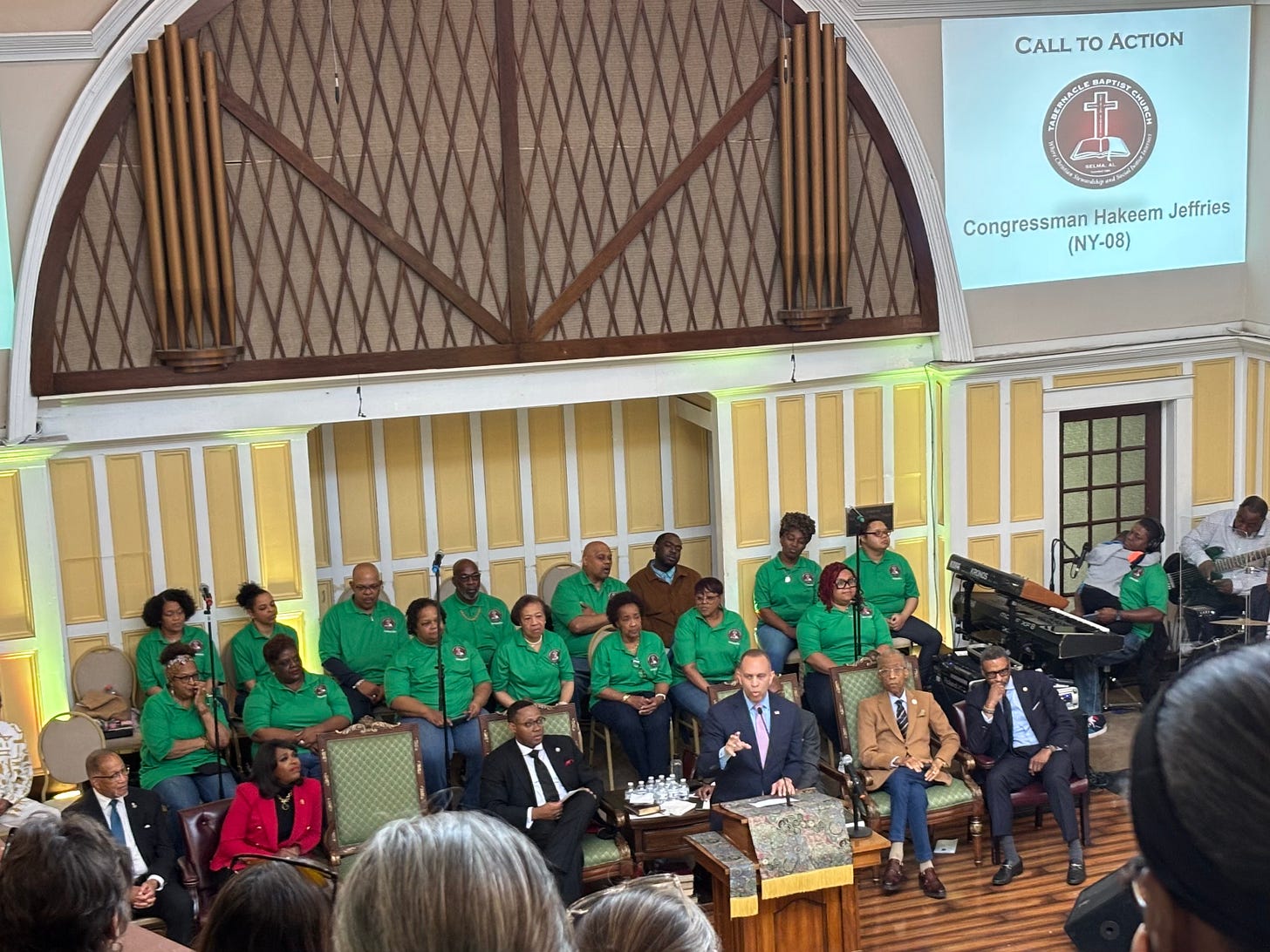
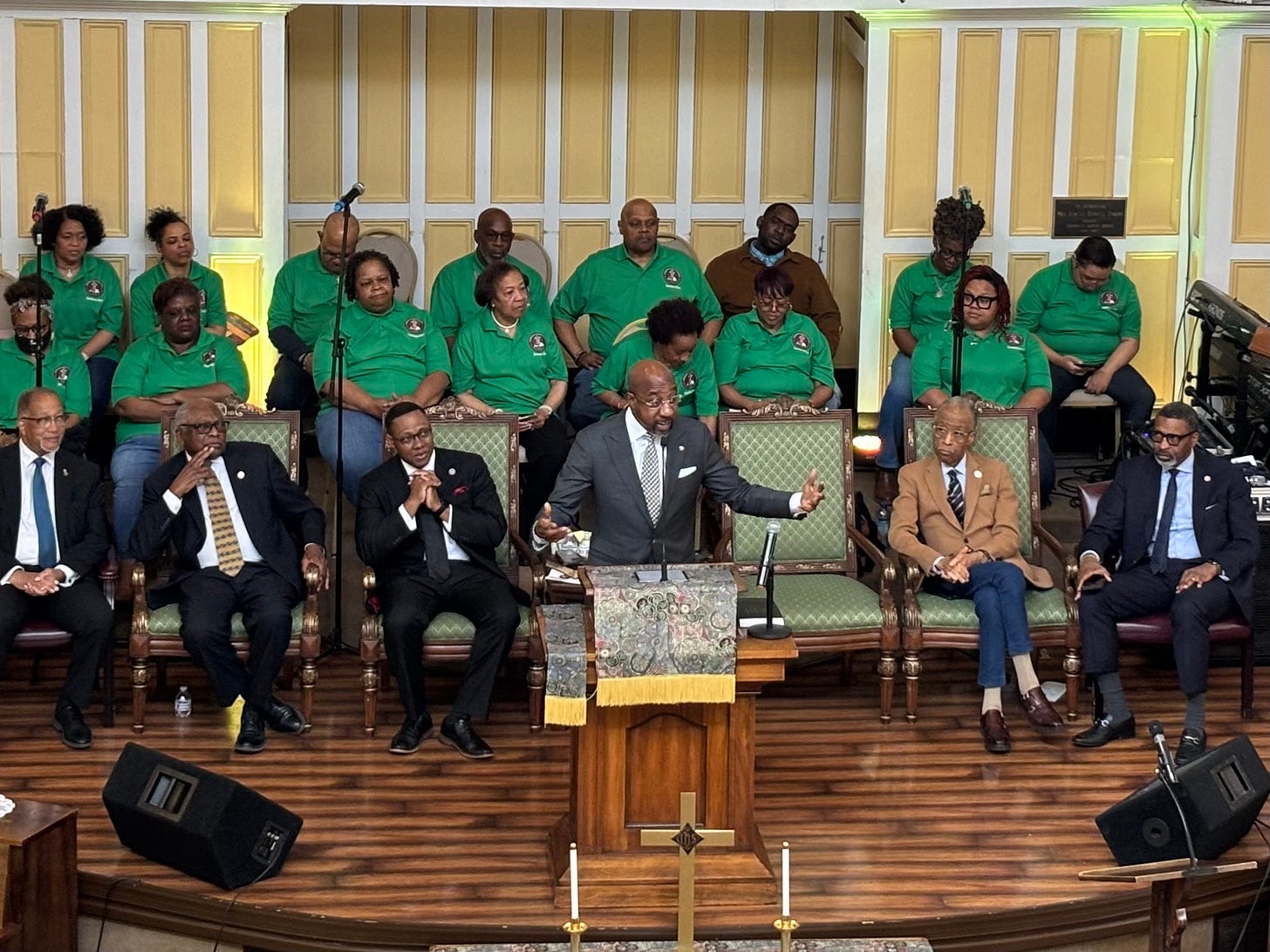
I’m guessing I’ve attended a couple thousand church services in my life, though, admittedly, this was just my third service in the Black Protestant tradition. However, it was, without a doubt, the most overtly political1 church service I’ve ever attended. I’m hoping to write about this at greater length soon.
After the service at Tabernacle, it was time to gather at the bridge.
I haven’t seen attendance estimates, but one of my colleagues said she thought it was well below the tens of thousands of folks who attended the 50th anniversary march a decade ago. Still, there were definitely thousands of people there — some in suits, some in jeans; some in religious robes, some in logo t-shirts; Black and white, men and women. It was a diverse crowd.
At the march two JBU students were interviewed by NPR’s Debbie Elliott for a story on the anniversary; one of them was even quoted in the piece. And I ran into Andra Gillespie, a political scientist at Emory University and a friend and alum from the Center for Christianity and Public Life’s Public Life Fellows program. Small world!
Following the march we drove back to Montgomery for tacos and further discussion. Then, it was back to our separate houses for packing and rest ahead of a long day of travel.
Day 4: Siloam Springs
After a very early start and nearly 12 hours on the road, we arrived back in Siloam Springs, Arkansas on Monday evening. The conversations and reflections will no doubt continue, but for now, I’m thankful for the opportunity to share such a memorable experience with these students and colleagues.
I’ve been to plenty of church services with political implications, but none with calls for specific kinds of political action from elected officials, from the pulpit.

